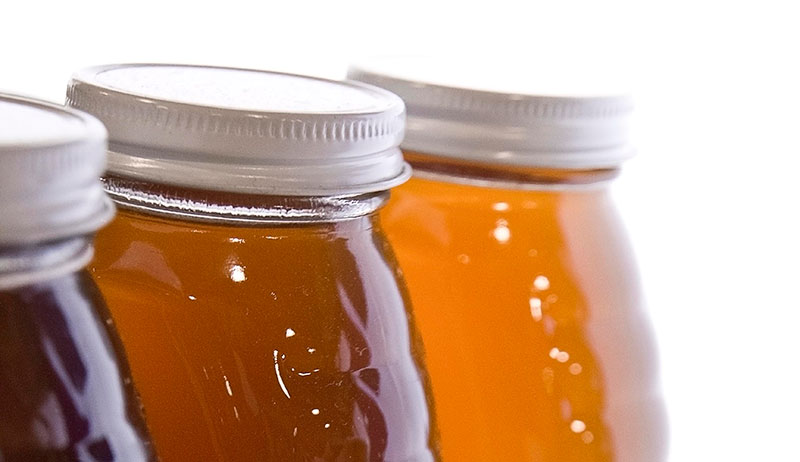
With reports of adulterated honey being sold on U.S. shelves, consumers have reason to be concerned. In a world where fossil-fuel consumption inspires a global economy where anyone can get anything at virtually any time, it can be increasingly difficult to track down sources of our food products. Because so many varietals of honey exist, and it’s a sweet product, it has been an easy target for adulteration, with some reports of high fructose corn syrup or sugar added as fillers.
Are you stressed out yet? I know! It shouldn’t be this difficult!
The good news? Shopping for healthy honey doesn’t have to be. Even if you’re not a beekeeper, you can learn a few things about the way it behaves, smells and tastes that will help you find the real stuff.
1. Know Your Beekeeper
Hands down, the best way to know everything about your honey—how it was produced, from which flowers, when and how it was harvested—is to know your beekeeper. If you can, purchase honey produced locally (“local” being defined within 100 miles of your home—”regional” within several states or so). Not only will you be able to speak with the beekeepers themselves, but you might get to see their bees and taste an amazing variety of season honeys.
2. Know Your Honey Supplier
If your beekeepers are out of reach, perhaps your supplier is well connected to them and can be your liaison. Ask your supplier (or grocer) the same questions you would ask your beekeeper: How are the hives tended? Are they medically treated, and if so, with what? How might this affect the honey? You will know by the answers whether the apiary in question is legitimate.
3. Read Honey Labels
Unfortunately, we are all learning just how misleading labels can be. That doesn’t mean we shouldn’t pay close attention, however. Read each jar’s label carefully and look for ambiguous or misleading language. Those include words such as “Imported” or “Honey Product” with no mention of the country of origin. Also, be wary of labels that have the company’s address and location as different than that of the source of the honey, unless you’ve asked lots of questions about the apiary.
4. Know What “Raw” Honey Means
Artisanal honey companies love to write “raw” on their labels, even if the product has been processed in some way. I see so many jars of what is creamed honey labeled raw. There seems to be the misconception that raw honey is somehow thicker and lighter in color. Raw honey is a light golden to amber or sometimes brown color that is runny and oozy at room temperature or warmer—this is how it comes out of the hive and off the comb. Search the web for videos and see for yourself. Of course, any and all honey might freeze under the right conditions, and this might lead to crystallization. Don’t confuse raw, crystallized honey with mislabeled creamed honey (which looks and has a similar consistency to honey that has crystallized).
5. Be Discerning & Trust Your Tastebuds
Does the honey have an off smell? Does it taste unusually sweet? Truthfully, it’s really hard to identify adulterated honey on taste buds alone, unless you are one very skilled honey connoisseur. But do trust your instincts when it comes to a product that you’ve purchased.
Eating real honey is a joy. What a gift the bees have given us with this incredible food, and there’s nothing quite like it in the world. Remember that supporting local, regional or authentic apiaries helps yourself and those consuming the honey. It also supports mindful beekeeping practices, which helps the bees themselves, and supports the beekeepers working for a sustainable product. In my mind, going through the extra legwork to find real honey is well worth the effort.




